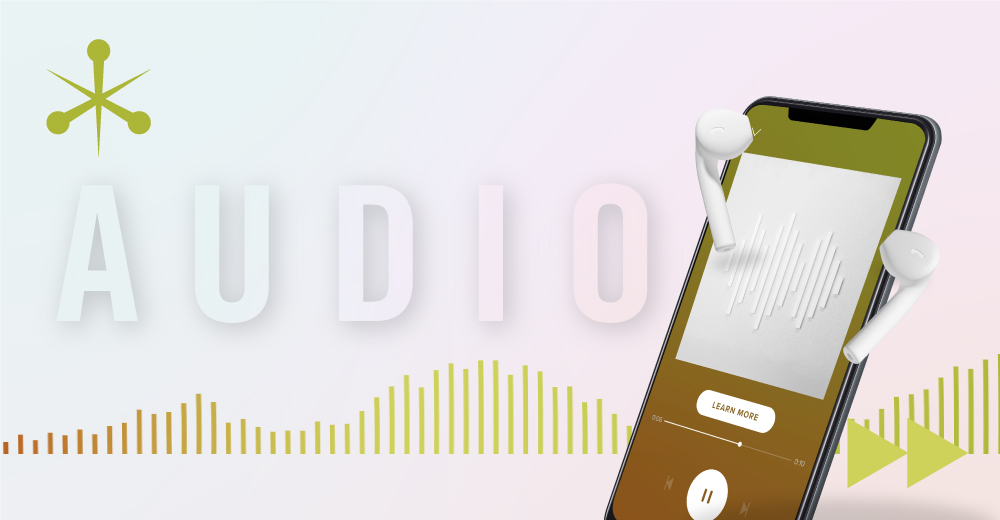From informative fireside chats to lively talk radio hours and now to podcasts and social programs, audio content has made an indelible impression on generations of Americans. For decades, consumers have tuned in to audio programs in their homes, in their cars and online.

In fact, the medium is more popular than ever as Americans rely on radio and audio programs to stay connected, consume news and entertain themselves. For this reason, audio advertising is an efficient way to reach a wide number of potential customers and should be considered in your marketing mix.
Radio
When the pandemic paused travel and daily commutes, broadcasters were concerned that listenership would drop off. But Americans have yet to dial down.
“Radio is a great complement to any marketing plan, and we try to pitch it often. It’s cost effective, and it provides you a lot of advertising options."
Travis Ziemke, media director at Trilix
During 2020, 8 in 10 Americans reported listening to radio the same amount or more, according to a Nielsen survey. We relied on radio programs for news; entertainment; and a safe, familiar connection to the outside world. Even now, radio programs reach nearly 90% of Americans for more than 12 hours each week since radio’s one of the most widely accessible ways to consume content.
“Radio is a great complement to any marketing plan, and we try to pitch it often,” noted Travis Ziemke, media director at Trilix. “It’s cost effective, and it provides you a lot of advertising options. Radio also really allows advertising to be ‘out of the box.’”
Marketers can purchase 15-, 30- or 60-second time slots, and they can choose to have their advertisements run at certain times of the day. In addition, companies can sponsor certain segments or events that align with their brand.
Often, listeners tune in to their favorite radio programs while driving, allowing brands to reach an attentive and less-distracted audience than other forms of advertising. Actually, radio advertisements helped increase retail sales in four industries by more than 20%, according to this study.
Streaming Audio
The majority of Americans — 62% — love streaming audio and do so weekly to the tune of streaming more than 16 hours a week, whether through podcasts or other online programs. Experts project 100 million podcast listeners in the U.S. by 2024.
As we shared in our first installment of the audio series, podcasts are a fabulous way to further develop and personalize your brand. Why? Americans of all ages are hungry for podcasts and loyally stream or download their favorites to entertain and enlighten themselves. For these same reasons, advertising through podcasts is a great addition to your marketing plan. And while radio advertising has long been a great way to reach a wide group of potential customers, podcasts allow advertisers to home in on specific audience segments.
The beauty of advertising through streaming audio is you can tap into digital targeting efforts and know the age, demographics and interests of your audiences.
Travis Ziemke, media director at Trilix
“Podcasts often have loyal niche audiences,” Travis explained. “The beauty of advertising through streaming audio is you can tap into digital targeting efforts and know the age, demographics and interests of your audiences. You can also monitor how many times listeners hear your message.”
Though many multitask while streaming audio while at work, in the gym or commuting, the good thing is that regular podcast listeners consume about seven a week, and the majority of those who stream listen to the entire episode. That means listeners frequently hear the message being advertised throughout many episodes.
Streaming audio advertising pays off. More than 40% of podcast listeners have purchased a podcast-advertised product, and nearly 70% of those who subscribe to multiple podcasts purchase products advertised on the programs they love, according to a 2021 NCS survey.
Social Audio
Social audio — introduced in the last two years — is the next phase in America’s devotion to audio content. Social platforms like Twitter Spaces, Clubhouse, Facebook Live Audio Rooms and Spotify Greenroom are connecting audio streaming to the interactive qualities of social media. As of August 2021, Clubhouse boasted 10 million downloads globally and 2 million weekly active users.
Through social audio, listeners can participate in the conversations as they take place. Unlike live video platforms like Zoom and Microsoft Teams, many social audio platforms don’t have a video component, so users don’t feel compelled to devote all their attention to the screen. Brands can use social audio to host regularly scheduled shows or hold conferences.
As social audio users grow, brands will have the opportunity to sponsor segments, pay for strategic product placements and run ads similar to radio and audio streaming advertisements. Brands also may have the opportunity to purchase banner ads that are displayed on social audio platforms.
“We’re definitely keeping our finger on the pulse of social audio marketing,” Travis said. “Media consumption is becoming more and more varied, so it’s always great to have another tool to make sure marketing plans are as diverse as possible.”
Whether Americans are listening via terrestrial radio, streaming audio or social audio apps, it’s clear that our love affair with audio is here to stay. Marketers who want to stay relevant with current customers and reach potential audiences will go where audiences are. Consider audio advertising for your marketing mix in the next year and beyond.